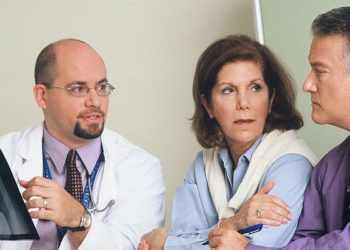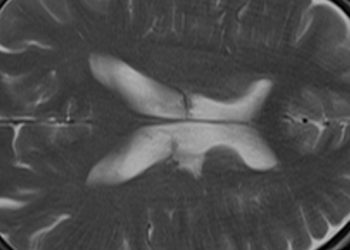2 Minute Medicine Rewind August 23, 2021
Effects of air pollution and habitual exercise on the risk of death: a longitudinal cohort study
1. Higher levels of exercise were associated with lower risk of death regardless of the level of exposure to fine particulate matter (PM2.5).
Evidence Rating Level: 2 (Good)
Air pollution and physical inactivity are considered leading causes of death and disability worldwide. However, greater than 91% of the world’s population lives in areas that do not need the World Health Organization (WHO) air quality guidelines. Therefore, exercising in these areas may actually increase pollutant inhalation. Some research has shown that acute exposure to pollutants outweighs the health benefits of exercise, but there is little research on the long-term effects of exercise in heavily polluted areas. The current longitudinal cohort study examined the influence of physical exercise and long-term air pollutant exposure on the risk of dying from natural causes. This study was based in Taiwan, where fine particle matter (PM2.5) concentrations are 1.6 times greater than the WHO guidelines. The study population consisted of 384,130 adults with 842,394 medical records from between 2001 and 2016. Imaging from satellites was used to estimate PM2.5 exposure based on home addresses of the participants, grouping them into low, moderate, and high exposure categories (<22.4, 22.4-26.0, and >26.0 ug/m3 respectively). Surveys were used to measure level of physical exercise, and participants were grouped into inactive, moderate, and high exercise categories. As a result, every participant was sorted into 1 of 9 groups based on these two variables, with the high exposure and inactive participants used as the reference group. The results found that in each category of PM2.5 exposure, more exercise was associated with a lower risk of death, whereas in each category of exercise level, more PM2.5 exposure was associated with a higher risk of death. The moderate and high exercise groups had lower risk compared to the inactive group (HR 0.84, 95% CI 0.80-0.88 & HR 0.65, 95% CI 0.62-0.68 respectively), whereas the moderate and high PM2.5 exposure groups had higher risk compared to the low exposure group (HR 1.02, 95% CI 0.98-1.07 & HR 1.15, 95% CI 1.10-1.20 respectively). The interaction effect of exercise and PM2.5 on risk of death was significant (hazard ratio 1.03, 95% CI 1.01-1.06). Overall, this showed that physical exercise is associated with a lower risk of death from natural causes, even in areas that have poorer air quality.
1. Adalimumab was efficacious when used simultaneously with wide-excision surgery for treatment of moderate to severe hidradenitis suppurativa (HS).
Evidence Rating Level: 1 (Excellent)
Hidradenitis suppurativa (HS) is a chronic inflammatory skin condition that affects the hair follicles, and is characterized by painful nodules, abscesses, scarring, and tissue destruction. It usually occurs in the anogenital, axillary, and inguinal areas. Wide-excision surgery is the preferred treatment for this condition, due to its low recurrence rate. However, surgery is often done on the most serious lesions, whereas anti-inflammatory treatments may be used to treat other lesions on the body. The drug adalimumab is indicated for moderate to severe HS, and observational studies have demonstrated that using adalimumab simultaneously with surgery may lead to improved outcomes. The purpose of this phase 4, multi-centre randomized controlled trial is to further explore the efficacy and safety of adalimumab when used alongside surgery for HS. 206 patients were randomized evenly to receive either adalimumab or a placebo, starting from 12 weeks pre-surgery until 10 weeks post-surgery (beginning with 160 mg at week 0, decreasing to 80 mg at week 2, and finally 40 mg from then on). The primary outcome (assessed at 12 weeks post-surgery) was the number of patients achieving an HS clinical response (HiSCR), which is a 50% or greater reduction in total abscess and inflammatory nodule (AN) count, and no increase in abscess and draining fistula count, for all areas of the body. The results showed that the proportion of patients attaining an HiSCR was significantly higher in the adalimumab group than the placebo (treatment difference 14%, 95% CI 0-27%, p = 0.49). Additionally, the proportion of patients achieving an HiSCR other than at the surgical site was not significantly higher, at 12 weeks (treatment difference 13%, 95% CI -1 to 26%, p = 0.07), but was significantly higher at 24 weeks (treatment difference 20%, 95% CI 7-34%, p = 0.003). As well, the percentage of treatment-emergent and serious adverse effects was similar between both groups. Overall, adalimumab was shown to be an efficacious and safe drug to be used in conjunction with surgical treatment for moderate to severe HS cases.
Association of age and pediatric household transmission of SARS-CoV-2 infection
1. Children aged 0 to 3 years old were more likely than children aged 14 to 17 to transmit SARS-CoV-2 to other household members.
Evidence Rating Level: 2 (Good)
The impact of children on SARS-CoV-2 transmission during the COVID-19 pandemic is not entirely clear. In part, this is due to many household studies grouping younger adults and children within the same age cohort. As well, although some meta-analyses found no significant differences in household susceptibility to COVID-19 between younger and older children, there have been mixed results for household infectivity. The current cohort study based in Ontario, Canada analyzed instances where children were the index case in their household, to determine the odds of transmission to other household members. Pediatric cases were split into 4 age categories: 0-3, 4-8, 9-13, and 14-17. Secondary cases were defined as people with onset of disease between 1 and 14 days after the pediatric index case. In total, 6280 private households between June and December 2020 had a pediatric index case, with a mean (SD) age of 10.7 (5.1) years. 27.3% of these households had a secondary transmission, with pediatric index cases more often transmitting to those aged 0-20 and 30-50. Index cases were higher as age increased, with 12% of cases being in the 0-3 years group, 20% in the 4-8 years, 30% in 9-13 years, and 38% in 14-17 years. Compared to children aged 14-17 years, those aged 0-3 years had higher odds of transmission (odds ratio 1.20, 95% CI 1.01-1.45), but there was no significant difference for the 9-13 age group. The 4-8 age group had a significantly higher transmission odds after adjusting for gender, month of disease onset, family size, and testing delay (OR 1.40, 95% CI 1.18-1.67). Furthermore, every day that a test was delayed, the odds of transmission increased (compared to 0 days, ORs of 1.24 and 1.59 corresponded to 1 and 2 day delays respectively). Overall, this study showed that younger children, in particular those between the ages of 0 and 3, are more likely than older children to transmit SARS-CoV-2 to other household members, underlying the importance of implementing household infection control practices since socially isolating young children may be unfeasible.
1. 15.5% of individuals undergoing primary genetic risk screening testing positive for a genetic variant associated with a preventable monogenic disorder.
2. 49.8% of individuals who tested positive had a variant associated with hereditary cancer.
Evidence Rating Level: 2 (Good)
Typically, genetic risk screening for healthy individuals is used mainly in preconception and pregnancy. One exception is that the American College of Medical Genetics and Genomics (ACMG) identified 59 genes, associated with monogenic disorders, that should also be screened when genome sequencing is indicated for other purposes. The Centres for Disease Control and Prevention (CDC) also acknowledge that genetic screening for hereditary ovarian and breast cancers, hypercholesterolemia, and Lynch syndrome would be of societal benefit. Therefore, this cohort study aimed to identify the prevalence of clinically significant gene variants associated with preventable disease, to determine the feasibility and benefit of primary genetic screening. In total, 147 genes were included in the screening, taken from sources such as the ACMG, ClinGen Working Group, and other clinical centres. The study population consisted of 10,478 unrelated adults who were offered genetic screening by their healthcare providers. The average age was 49.5, 59.0% were female, and 59.9% were Caucasian. 15.5% of patients had clinically significant results, and 1.3% exhibited multiple genetic variants for more than one condition. 6.2% showed a positive genotype for a high impact condition, such as hereditary cancer or a cardiovascular condition, whereas 9.3% were positive for a moderate impact condition, such as alpha-1 antitrypsin deficiency or hereditary hemochromatosis. Among the 15.5% who tested positive for any variant, 49.8% showed variants for hereditary cancer. Overall, this study found that nearly 1 in 6 individuals may have genetic variants that can pre-dispose them to preventable conditions, especially hereditary cancer.
1. Patients with chronic limb ischemia (CLI) treated with low-intensity pulsed ultrasound (LIPUS) had lower rates of amputation compared to those treated under standard care without LIPUS, after 5-year follow-up.
2. No difference in 5-year rates of survival or major adverse cardiovascular events were found between CLI patients treated with or without LIPUS.
Evidence Rating Level: 2 (Good)
Critical limb ischemia (CLI) is defined as insufficient tissue perfusion for greater than 14 days, and is considered the end-stage of peripheral artery disease (PAD). CLI patients are at greater risk of amputation, cardiovascular issues, and death. In fact, one third or more of CLI patients are not offered a choice when it comes to amputation. When considering the costs, rehabilitation needs, and psychological burden for CLI patients with amputations, less invasive interventions for CLI could vastly improve quality of life. Low-intensity pulsed ultrasound (LIPUS) has been shown to induce microvascular regeneration by stimulating various angiogenic factors, such as IL-8 and vascular endothelial growth factor (VEGF). The current cohort study based in Hiroshima, Japan examined 5-year outcomes for atherosclerotic CLI patients that were and were not treated with LIPUS. The study population consisted of 14 patients in the LIPUS group, enrolled between 2011 and 2015, with 14 historical control patients that were treated under standard guidelines (no LIPUS) between those same years. No significant differences in sample parameters were found between the groups. The average (SD) LIPUS exposure duration was 381 (283) days. The results showed that there were fewer amputations in the LIPUS group, with only 3 major amputations compared to 14 in the control: The amputation-free survival rate was significantly greater in the LIPUS group. However, there were no differences in deaths or mortality-free survival rates, with both groups having 7 deaths. Finally, there were no differences in major adverse cardiovascular events (MACE): the LIPUS group had 2 cardiovascular deaths, 1 patient with stroke, and 1 hospitalized for heart failure, whereas the control group had 3 cardiovascular deaths, 1 patient with stroke, and 2 myocardial infarctions. Overall, LIPUS is associated with a lower risk of amputation in CLI patients, but not with any differences in survival or MACE rates.
Image: PD
@2021 2 Minute Medicine, Inc. All rights reserved. No works may be reproduced without expressed written consent from 2 Minute Medicine, Inc. Inquire about licensing here. No article should be construed as medical advice and is not intended as such by the authors or by 2 Minute Medicine, Inc.







